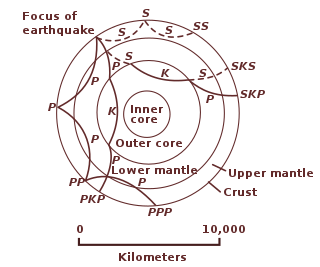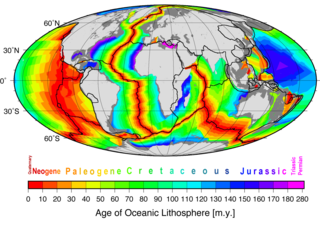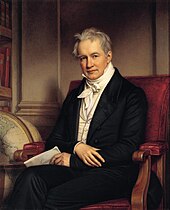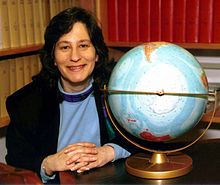
Geophysics is a subject of natural science concerned with the physical processes and physical properties of the Earth and its surrounding space environment, and the use of quantitative methods for their analysis. Geophysicists, who usually study geophysics, physics, or one of the Earth sciences at the graduate level, complete investigations across a wide range of scientific disciplines. The term geophysics classically refers to solid earth applications: Earth's shape; its gravitational, magnetic fields, and electromagnetic fields ; its internal structure and composition; its dynamics and their surface expression in plate tectonics, the generation of magmas, volcanism and rock formation. However, modern geophysics organizations and pure scientists use a broader definition that includes the water cycle including snow and ice; fluid dynamics of the oceans and the atmosphere; electricity and magnetism in the ionosphere and magnetosphere and solar-terrestrial physics; and analogous problems associated with the Moon and other planets.

William Maurice "Doc" Ewing was an American geophysicist and oceanographer.

The Society of Exploration Geophysicists (SEG) is a learned society dedicated to promoting the science and education of exploration geophysics in particular and geophysics in general. The Society fosters the expert and ethical practice of geophysics in the exploration and development of natural resources, in characterizing the near-surface, and in mitigating earth hazards. As of November 2019, SEG has more than 14,000 members working in more than 114 countries. SEG was founded in 1930 in Houston, Texas but its business office has been headquartered in Tulsa, Oklahoma since the mid-1940s. While most SEG members are involved in exploration for petroleum, SEG members also are involved in application of geophysics methods to mineral exploration as well as environmental and engineering problems, archaeology, and other scientific endeavors. SEG publishes The Leading Edge (TLE), a monthly professional magazine, Geophysics, a peer-reviewed archival publication, and Interpretation, a peer-reviewed journal co-published by SEG and the American Association of Petroleum Geologists.
Allan Verne Cox was an American geophysicist. His work on dating geomagnetic reversals, with Richard Doell and Brent Dalrymple, made a major contribution to the theory of plate tectonics. Allan Cox won numerous awards, including the prestigious Vetlesen Prize, and was the president of the American Geophysical Union. He was the author of over a hundred scientific papers, and the author or editor of two books on plate tectonics. On January 27, 1987, Cox died in an apparent suicide.
The Lamont–Doherty Earth Observatory (LDEO) is the scientific research center of the Columbia Climate School, and a unit of The Earth Institute at Columbia University. It focuses on climate and earth sciences and is located on a 189-acre campus in Palisades, New York, 18 miles (29 km) north of Manhattan on the Hudson River.

Don Lynn Anderson was an American geophysicist who made significant contributions to the understanding of the origin, evolution, structure, and composition of Earth and other planets. An expert in numerous scientific disciplines, Anderson's work combined seismology, solid state physics, geochemistry and petrology to explain how the Earth works. Anderson was best known for his contributions to the understanding of the Earth's deep interior, and more recently, for the plate theory hypothesis that hotspots are the product of plate tectonics rather than narrow plumes emanating from the deep Earth. Anderson was Professor (Emeritus) of Geophysics in the Division of Geological and Planetary Sciences at the California Institute of Technology (Caltech). He received numerous awards from geophysical, geological and astronomical societies. In 1998 he was awarded the Crafoord Prize by the Royal Swedish Academy of Sciences along with Adam Dziewonski. Later that year, Anderson received the National Medal of Science. He held honorary doctorates from Rensselaer Polytechnic Institute and the University of Paris (Sorbonne), and served on numerous university advisory committees, including those at Harvard, Princeton, Yale, University of Chicago, Stanford, University of Paris, Purdue University, and Rice University. Anderson's wide-ranging research resulted in hundreds of published papers in the fields of planetary science, seismology, mineral physics, petrology, geochemistry, tectonics and the philosophy of science.
Sir Edward Crisp Bullard FRS was a British geophysicist who is considered, along with Maurice Ewing, to have founded the discipline of marine geophysics. He developed the theory of the geodynamo, pioneered the use of seismology to study the sea floor, measured geothermal heat flow through the ocean crust, and found new evidence for the theory of continental drift.
Jon F. Claerbout is an American geophysicist and seismologist. He is the Cecil Green Professor Emeritus of Geophysics at Stanford University. Since the later half of the 20th century, he has been a leading researcher and pioneered the use of computers in processing and filtering seismic exploration data, eventually developing the field of time series analysis and seismic interferometry, modelling the propagation of seismic waves.
Walter Clarkson Pitman III was an American geophysicist and a professor emeritus at Columbia University. His measurements of magnetic anomalies on the ocean floor supported the Morley–Vine–Matthews hypothesis explaining seafloor spreading. With William Ryan, he developed the Black Sea deluge theory. Among his major awards are the Alexander Agassiz Medal and the Vetlesen Prize.

Adam Marian Dziewoński was a Polish-American geophysicist who made seminal contributions to the determination of the large-scale structure of the Earth's interior and the nature of earthquakes using seismological methods. He spent most of his career at Harvard University, where he was the Frank B. Baird, Jr. Professor of Science.
The historical development of geophysics has been motivated by two factors. One of these is the research curiosity of humankind related to planet Earth and its several components, its events and its problems. The second is economical usage of Earth's resources and Earth-related hazards such as earthquakes, volcanoes, tsunamis, tides, and floods.
(Stanley) Keith Runcorn was a British physicist whose paleomagnetic reconstruction of the relative motions of Europe and America revived the theory of continental drift and was a major contribution to plate tectonics.
Two international geophysical societies offer awards each year which are named in honor of Maurice Ewing; these are the American Geophysical Union and the Society of Exploration Geophysicists.

The following outline is provided as an overview of and topical guide to geophysics:
Arthur Weglein is an American seismologist. He is the Hugh Roy & Lillie Cranz Cullen distinguished professor of physics at the University of Houston, and director of its Mission-oriented Seismic Research Program. He received the Townsend Harris Medal of the City College of New York in 2008 for his contributions to seismology. He received the Reginald Fessenden Award of the Society of Exploration Geophysicists in 2010. He received the Maurice Ewing Medal of the Society of Exploration Geophysicists in 2016.
Robert E. Sheriff was an American geophysicist best known for writing the comprehensive geophysical reference, Encyclopedic Dictionary of Exploration Geophysics. His main research interests included the seismic detailing of reservoirs, in 3-D seismic interpretation and seismic stratigraphy, and practical applications of geophysical methods. Hua-Wei Zhou, Department Chair of the Department of Earth and Atmospheric Sciences, said about Sheriff: “…a giant figure in the world of exploration geophysics… When I think about Bob, a number of key words pop up in my mind: kindness, honesty, hardworking, seeking perfection, generosity and wisdom.”

Mrinal Kanti Sen, an Indian-American geophysicist is the John A. and Katherine G. Jackson Chair in Applied Seismology at the Jackson School of Geosciences of the University of Texas at Austin. He holds joint appointment with the Institute for Geophysics (UTIG) and the Department of Geological sciences (DGS). Since 2016, he has been serving as the head of the energy research division at UTIG. He has been a pioneer in the field Seismic Wave Propagation and Inverse Theory applied to Geophysical Problems. He has published more than 180 papers, and two books, and supervised over 50 graduate students. As an author, he is widely held in libraries worldwide. He was recognized by the Society of Exploration Geophysicists in 2015 for pioneering development and application of global optimization methods in geophysical inversion.
Krishan Lal Kaila (1932–2003) was an Indian geophysicist and seismologist. Born in Lahore of the British India on 7 September 1932, he was known for his studies on deep seismic soundings (DSS) and was one of the pioneers of the DSS technique in India. His studies covered the tectonic regions of Kadapa, Dharwar Craton, Deccan Traps, and the sedimentary basins of Gujarat and the Himalayas and added to the understanding of the geophysics of the region. His researches have been documented as several peer-reviewed articles; ResearchGate, an online article repository has listed 117 of them. Several authors have cited his works in their work.
David Gubbins is a British former geophysicist concerned with the mechanism of the Earth's magnetic field and theoretical geophysics. He is Emeritus Professor of Earth Sciences at Leeds University.

Marine geophysics is the scientific discipline that employs methods of geophysics to study the world's ocean basins and continental margins, particularly the solid earth beneath the ocean. It shares objectives with marine geology, which uses sedimentological, paleontological, and geochemical methods. Marine geophysical data analyses led to the theories of seafloor spreading and plate tectonics.


















